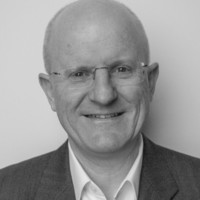Few in the industry can talk about the intersection of AI, cloud, and physical infrastructure with the range and depth of Scott Charter. As director of AI strategy at Oracle North America, he’s immersed in the rapid evolution of model architectures, from today’s transformer systems to tomorrow’s world-model frameworks.
While he’ll be keynoting at the New Zealand Cloud & Datacenter Convention in a personal capacity, his perspective is shaped by a front-row seat to one of the most ambitious AI pushes in the industry – one that extends from the hyperscale cloud to the data centre floor and Stargate.
Charter is part technologist, part futurist, with a fascination for how data centres can evolve to meet the twin challenges of compute demand and sustainability. His expertise spans far beyond AI. He’s spent a decade exploring non-traditional water treatment systems, and is equally at home discussing deep geothermal wells, new BESS chemistries, and the promise of perovskite solar cells. What connects these fields is a conviction that the future data centre will be defined as much by power innovation as by processing power.
At a time when energy scarcity, carbon intensity, and workforce shortages threaten to bottleneck digital growth, Charter’s view is refreshingly expansive. He believes intelligent systems will not just reshape software, but also the physical systems that sustain it – from the way water flows through cooling loops to how electrons are stored and dispatched. His background in AI gives him a uniquely integrated lens on the data centre as both a machine and an ecosystem.
We sat down with Scott ahead of his opening keynote at the New Zealand Cloud & Datacenter Convention in November to explore where he sees the next decade of infrastructure heading — from deep geothermal to edge AI, and the human skills that will be needed to power it all.
W.Media: Power innovation is a huge theme for data centres today. From your vantage point, how realistic are emerging technologies like deep geothermal, new BESS chemistries, or perovskite solar cells for large-scale deployment in the next decade?
Scott: I am a big fan of all three technologies you mentioned. You must be reading my mind. Deep geothermal offers a lot of promise, as subset of the “enhanced geothermal” category. Advances in drilling technology are enabling the extraction of supercritical hot rock at temperatures of 300-500°C, which can yield 10 times the power of conventional geothermal systems.
Changing to BESS, this field is gaining significant traction as a means to meet our massive power demands. This growth is supported by falling battery costs, improved energy density, and the flexibility of modular BESS deployments. Additionally, BESS offers a technical advantage of softening the electrical spikes attributed to AI workloads, by acting as a shock absorber for the power supply.
Lastly, the future of solar pv is bright (pun intended), especially, with newer technologies like perovskite to enhance power conversion efficiencies. A good friend of mine is the CEO of a perovskite solar company, so I have been able to follow this sector very closely. What makes all three of these technologies so interesting, is their overlapping aim to increase power density without the need for burning carbon.
W.Media: Operators in ANZ face rising energy costs and limited renewable supply. What lessons from the US market can be applied here to accelerate adoption of next-generation energy solutions?
Scott: The rising demand for additional compute is driving up energy costs, not just for the data centre operator, but for the rest of us. Incentivising next-generation energy adoption is critical as a hedge against limited renewable energy supply. ANZ operators may find it beneficial to follow some of the pioneering concepts US-based utilities are implementing to allocate rising costs to the data centre operators, without penalising residential energy users with new fees and rising bills.
W.Media: You’ve worked extensively in water management – what non-traditional approaches to cooling and water use should data centre operators be exploring, particularly in regions like New Zealand where sustainability is under close scrutiny?
Scott: Fresh water is a precious commodity that should not be needlessly wasted. Yet, a majority of commercial and industrial buildings rely on 100+ year old water treatment methods that unnecessarily introduce toxic chemicals to this water supply. Additionally, these same treatment methods often waste 20-30% of HVAC energy through inefficient heat transfer mitigation.
Operators in ANZ have the potential of saving millions of gallons of fresh water by exploring non-traditional, yet highly effective, water treatment options from a growing list of sustainable water treatment operators. One promising methodology includes Advanced Oxidation Processes (AOP), combined with nano-bubble gas diffusion and mechanical sub-micron filtration.
W.Media: How do you see AI intersecting with water management – can intelligent systems materially improve efficiency and reduce environmental impact?
Scott: We continue to find new ways to manage systems, using neural networks (AI). Instead of pre-programming set points on water management components, such as valves, pumps and fans, AI has been found to be more efficient in tuning a system for efficiency optimisation. With billions of possible combinations, AI is poised to optimise water management better than any human, offering massive savings of energy and water.
W.Media: The industry is buzzing about the shift from transformer models to world-model architectures. What infrastructure implications will this shift have for data centres?
Scott: Predicting the next word, or token, is at the essence of transformer models. However, language is not the only way we humans learn. A baby watches and mimics its elders, via sight, well before words are understood. This is the basis of world-model architectures, which train on vast, unlabelled video datasets to learn “intuitive physics” by predicting future frames. They learn to represent and predict real-world dynamics, including how objects move, interact, and persist over time, without being explicitly programmed by words or language. The implications of these new models on data centres will require more model training.
W.Media: Inference at the edge is increasingly important. What does Oracle see as the right balance between hyperscale data centres and edge infrastructure to support AI workloads?
Scott: I personally believe edge infrastructure will continue to be more important as AI inferencing becomes the dominant workload type. This is an eventual growth, as enterprise adoption of agentic workflows becomes the norm in business process automation. Currently, we are still in the infancy of true agentic automation. As such, 90% of AI workloads are still focused on model training. While model training will not lessen, but continue to grow, AI inferencing will grow even bigger, and ultimately eclipse the 75/25 split of today with 10/90 split in the coming years of training/inference ratios.
W.Media: You’ve highlighted the looming shortage of skilled digital infrastructure workers. What kinds of skills should the next generation prioritise to remain relevant as AI reshapes both IT and facilities roles?
Scott: In the next three to five years, all digital infrastructure workers will need to be conversational in AI. Understanding how to work with model prompting, human-in-the-loop AI interfaces, and other still to be discovered AI usage will become the norm. Individuals without these skills will find employment options limited as our society becomes intertwined with more automation.
W.Media: How can operators in smaller markets like New Zealand attract and retain talent when competing with larger global players?
Scott: This is a tough question to answer. Smaller markets lure workers who are fleeing the large metropolis if there are employment opportunities. In the US, we face this same issue, when attempting to attract skilled workers into rural America. On a personal note, I would love to bring my digital infrastructure skills to NZ, and believe there are thousands of other “big city” workers, who would jump at the chance to work in NZ.
W.Media: Oracle is deploying AI extensively across its enterprise offerings and internally. From your personal perspective, what has surprised you most about AI’s real-world impact inside organisations?
Scott: I am most surprised at how my colleagues and myself have quickly adapted to new technology and automation. Just yesterday, I got into another driverless taxi, and did not even stop to question my safety. After my fifth or sixth experience with a Waymo driverless Uber, I stopped thinking about the absurdity of trusting this machine with my life. Similarly, inside my workplace, I am now leveraging AI and automation, to author, to answer, and to automate business processes that used to take me hours and days; now, these activities take me seconds and minutes to achieve. The fact that my colleagues and I are becoming immune to this awesome transformation is what surprises me the most.
W.Media: Looking ahead, do you see AI as primarily augmenting skilled trades in the data centre workforce, or is there a risk it will displace roles faster than operators can reskill?
Scott: Depending on the pundits that I read and watch, the answer varies. Some believe AI will gently augment our skilled trades, with subtle annual enhancements; whereby the enhancements are gradual. Others, whom I tend to agree with, believe this will be more abrupt. I believe the data centre workforce will be 80% robotic within ten years.
Scott Charter will deliver the Opening Keynote: The Intelligence Era: AI, Cloud & the Data Centre of Tomorrow at W.Media’s New Zealand Cloud and Datacenter Convention 2025 at the Pullman Auckland Hotel on 6 November 2025.
To attend, please visit: https://clouddatacenter.events/events/new-zealand-cloud-datacenter-convention-2025/


